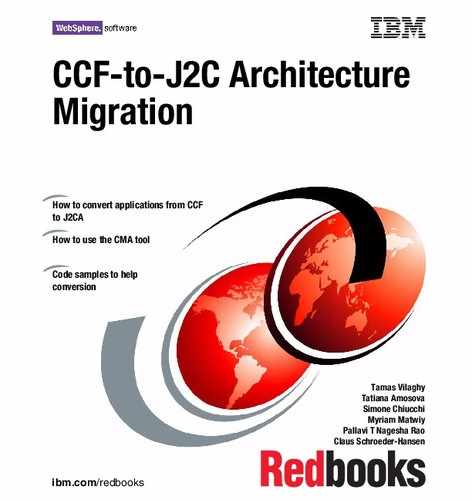Book Description
This IBM Redbooks publication will help you design a solution to migrate an application from the Common Connector Framework (CCF) to the J2EE Connector Architecture (J2CA). As CCF is phased out and the new technology replaces it, customers will find that migration must be planned and executed carefully.
The idea behind this book is to show the architectural differences between the two technologies and help with planning and executing a smooth migration. We show the routes, either automatic or manual migration, and document the tools and tricks that can be used to perform the migration.
The automatic migration tool used in this book is the CCF Migration Assistant (CMA) developed by IBM to help customers in their migration efforts. In both cases, automatic and manual, certain preparation and post-processing steps must be performed, and we also show how to accomplish them.
We also include a chapter about migrating a real-life application using the tools and ideas listed in the other chapters of the book.
The book is an extension of the original Redpaper REDP-3784, published in 2003.
Table of Contents
- Notices
- Preface
- Chapter 1: Introduction
- Chapter 2: Preparation for migration
- Chapter 3: Automated migration using CCF Migration Assistant
- Chapter 4: Manual migration
- Chapter 5: Post-migration steps
- Chapter 6: Special considerations
- Chapter 7: Migrating a real-life application
- Chapter 8: Comparing CCF to J2C Architecture
- Abbreviations and acronyms
- Related publications
- Index (1/2)
- Index (2/2)
- Back cover
